We are sharing the Bambu Lab X1 Carbon 3D Printer Review / Test topic by a user. All the details are here. “My name is Andreas and I have several SLA and FDM printers (too much for my boss at home). I started with a build myself and gradually moved towards the semi-professional direction. Today I can introduce you to the Bamboo Lab X1 Carbon 3D printer from my perspective in a reader test.
Printer It was recently introduced on China Gadgets and I was lucky that mine was at the door almost at the same time. My printer is the Bambu Lab X1 Carbon 3d Printer / Carbon Combo (X1 Carbon + AMS System). I ordered it on Kickstarter. I look forward to your feedback and questions.”
Bambu Lab X1 Carbon 3d Printer Review, Specs & Price
- Bambu Lab X1 Carbon 3D printer
- At Bambu Lab for €1257 (X1 Carbon) | 1507€ (X1 carbon combo)
- Numbers, data, facts: the most important technical facts first
| printing technology | FDM (Direct Drive) |
| print speed | 500mm/s (!) |
| acceleration values | 20000mm/s² |
| installation space | 256x256x256 [mm] |
| print bed | heatable (up to 120 degrees) |
| max. nozzle temperature | 300 degrees |
| nozzle diameter | 0.4mm (optional 0.2, 0.6, 0.8) |
| flow rate | 32mm³/s |
| connectivity | USB, microSD, Wi-Fi, App, PC software (proprietary) |
| features | auto leveling Activated carbon filter [X1 Carbon] Automatic Material System (AMS) (4 Colors) [X1 Carbon] Build space heating up to 60°C (indirect via heating bed) Component cooler in the installation space (12W) (X1 Carbon] Print error detection and auto pause (automatic) Humidity Sensor [X1 Carbon] Filament distance measurement (optional) Full HD Camera [X1 Carbon] AI (NPU) LIDARP ower Loss Recovery door sensor Vibration compensation (automatic) |
Delivery, scope of delivery & unboxing
Bambu Lab X1 Carbon 3D printer: The entire delivery process and handling of the Kickstarter campaign was very good. It was updated regularly and shipped as promised. It is important to distinguish here: when is it promised that it will be sent and when that it will be received. That’s a big difference. The printer of course comes with the ship with many others and that just takes a few weeks. If you realize that, you won’t be frustrated.
The packaging and unboxing was great, there are extra brackets, screws and more just to keep everything in place and allow for safe transport (if handled reasonably normally). So no assembly was necessary, rather a disassembly of the transport lock. But no problem. This is the first indication that a decent design team is behind the printer.
The scope of delivery is normal : four coils with 250g test material each were included (PLA, PA-CF, support material, ABS), a few spare parts (nozzle, hotend, hoses, etc.) and the standard tools that you need for commissioning.
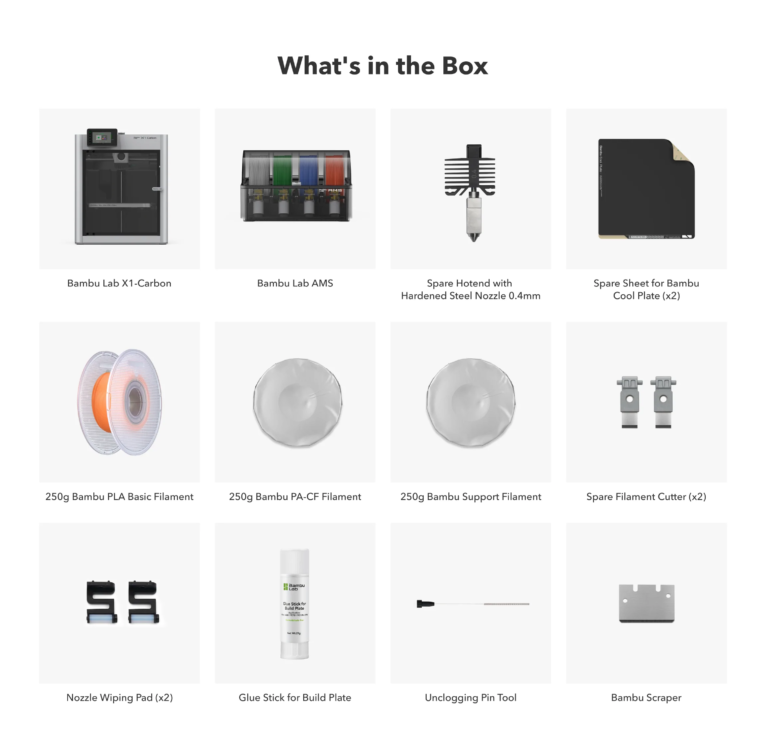
Design
This is where the printer really stands out. And by “design” I don’t just mean the visual design, but the holistic product design. So form, function and interaction of both.
You can tell that a lot of energy was put into the product design. The most important elements are easily accessible, but still neatly stowed away in a visually very attractive device. It not only feels high-quality in terms of “look” but also in terms of “feeling”.
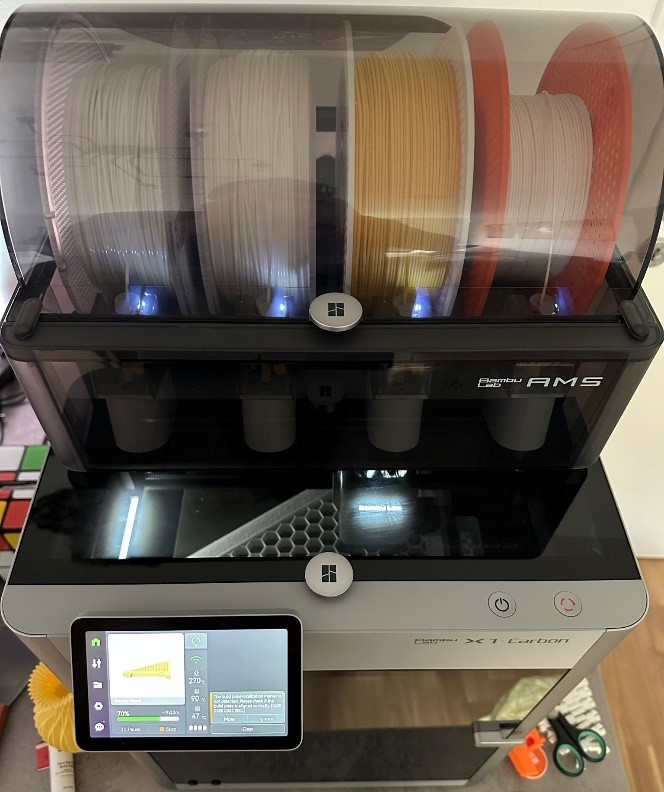
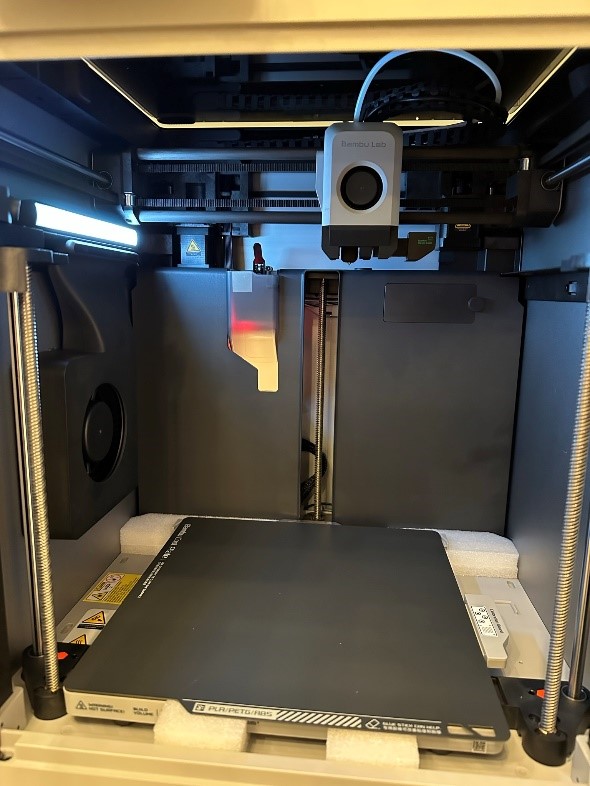
Functionalities
With a build volume of 256 x 256 x 256 mm and a weight of 13.18 kg, the printer is packed with features. I’ve never had some of these with a printer before. Just a few of the features below:
Speed
The point is simple. The thing is just really fast. At standard speed I’m 2-3x faster than any of my other printers with significantly better quality.
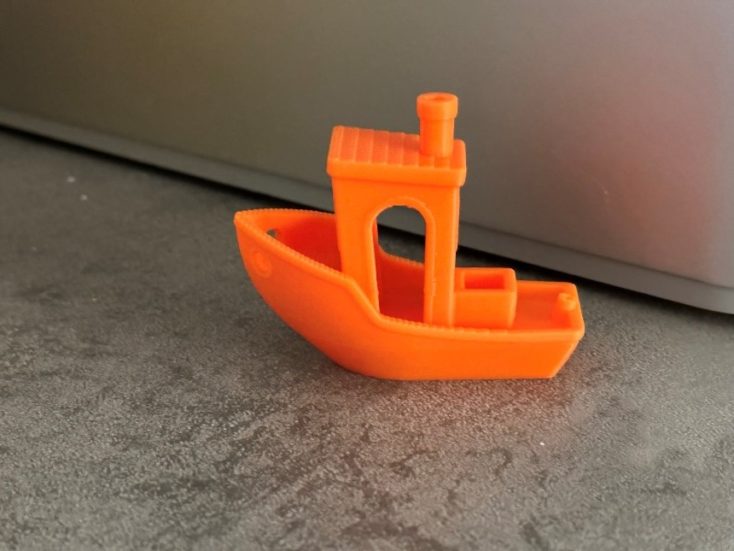
Print Bed
In short: a double-sided bed is supplied with different surfaces for different materials. The pads are great and work very well, but glue stick is recommended, which is what I always used. Not a single print has come off, so one could say: function fulfilled. But I don’t like messing with the glue stick residue , so maybe that’s a minor downside: I would have preferred a textured PEI spring steel overlay instead. Nevertheless, the documents are held in place magnetically.
But I knew that and immediately ordered a double-sided textured PEI sheet (approx. €35). The PEI plate works well as usual. After 150 hours of printing, I have not had a single detachment.
Micro-Lidar – First Layer Inspection & Flow Calibration
Bambu Lab X1 Carbon 3D Printer Review – At each start (if desired), a small calibration pattern is printed, measured three-dimensionally with the lidar and the material flow is thereby calibrated. Duration: approx. 2 minutes.
In addition, the first layer is scanned with the lidar sensor by default and you receive a message if defects are detected.
This works for me too: I had some small defects in the first layer in 1-2 prints and the message was displayed. I did let the prints continue though as it was hardly disruptive.
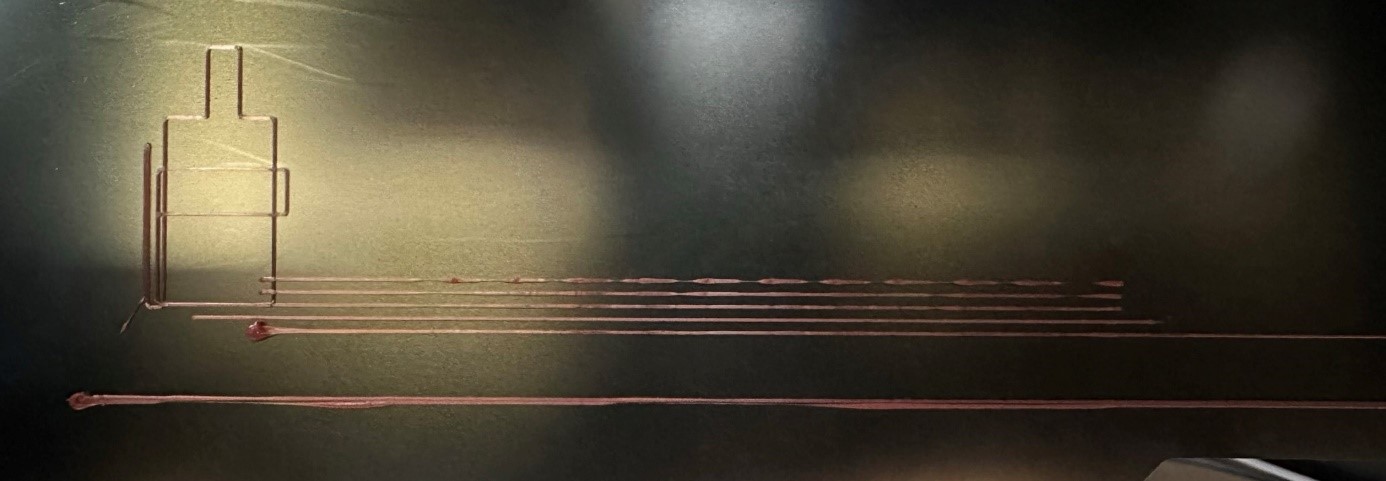
Self-calibration aka “I’ll press print and go to bed”
Bed levelling, vibration calibration, flow calibration and more: the full package and so far almost 100% effective. To get an impression of the process at a print start and to see what’s behind it: (Bambu Lab X1 Carbon 3D Printer Review)
- Preheat the print bed and homing of all axes.
- Heating the extruder above the “Waste Bucket” (small garbage can)
- If wrong filament loaded, then unload old & feed new filament (automatically with AMS) and small extrude new material over waste bucket
- Automatic cleaning of the nozzle first at the scraper and then carefully at the print bed to ensure that no filament residue causes an error during the print bed calibration.
- Zeroing the print bed with the lidar sensor
- Zeroing the print bed in 16 places with the hotend
- Self-calibration using the lidar by running over a calibration pattern on the edge of the print bed
- Check the correct position of the removable pressure plate (flexplate) via a code on the edge of the plate
- Checking the print area for remnants of old prints with the lidar
- Very rapid accelerations in the X and Y directions lead to vibrations, which are measured to counteract the vibrations when pressure is applied (e.g. like active noise canceling in headphones).
- Printing a small calibration pattern at the edge of the printing plate and several lines with different feed speeds.
- By measuring the pattern and lines with the lidar, the optimal flow setting is automatically determined and applied to the print.
- First layer printing.
- Measure the first layer with the lidar and camera to check for delamination or damage.
- The “normal” print starts with optimal settings.
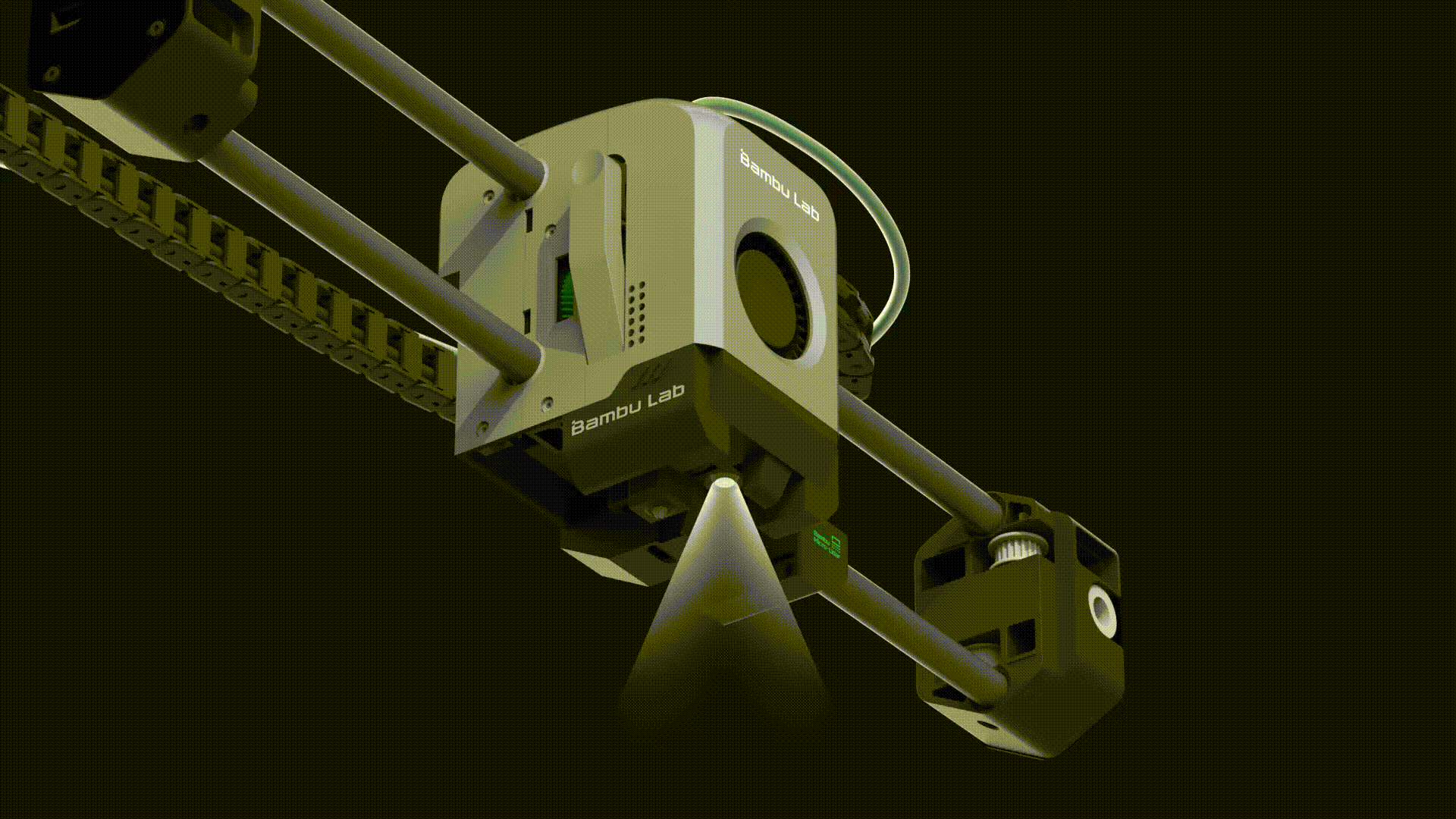
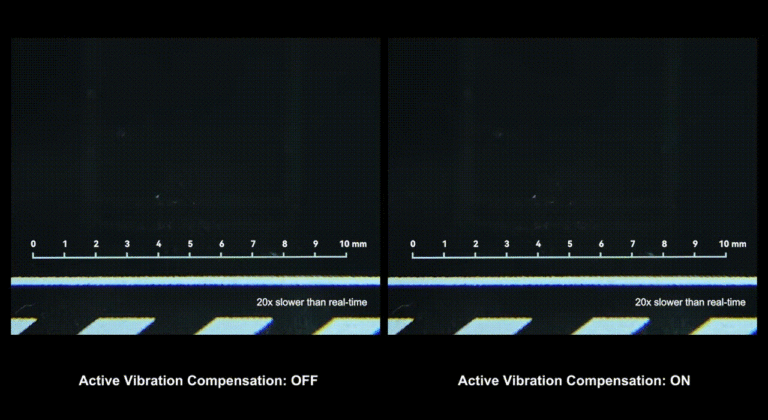
The whole thing takes about 7 minutes and just shows how much you can achieve with good software and the right sensors. This is exemplary for the whole printer, namely simply well thought out. Of course, individual steps can also be deactivated if you wish.
I summarized the whole thing in a video (I’m not a video content creator, forgive the image and editing quality):
Camera Surveillance
Bambu Lab X1 Carbon 3D Printer Review – The camera is used for several functions . I use it once for remote monitoring. The camera feed can be viewed via the mobile app and the slicer. Time-lapse recordings can also be created. The time-lapse recording can be activated in the slicer. It is then carried out and filed automatically:
There is also spaghetti detection. If a pile of spaghetti is detected, you will receive a notification and the print will be automatically paused – depending on the setting. This happened to me once and it took a while for the spaghetti error to be recognized, but eventually the print was paused and I was able to see what was going on.
You will then also receive a message on your mobile phone. The reason was a wrong setting I made in the slicer, which led to problems with certain geometries (the pressure could still be saved, the middle tower in the right picture below just doesn’t have a roof now).
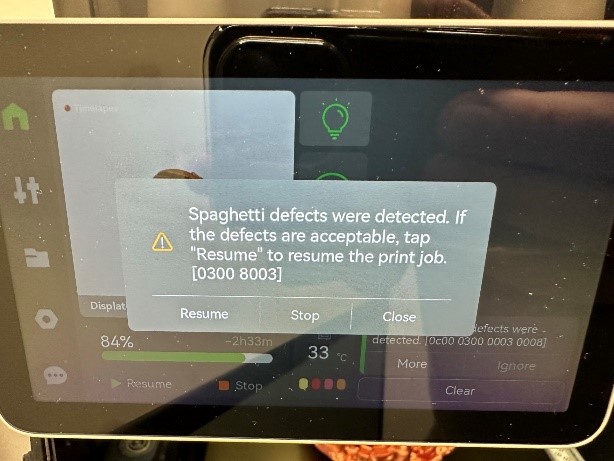
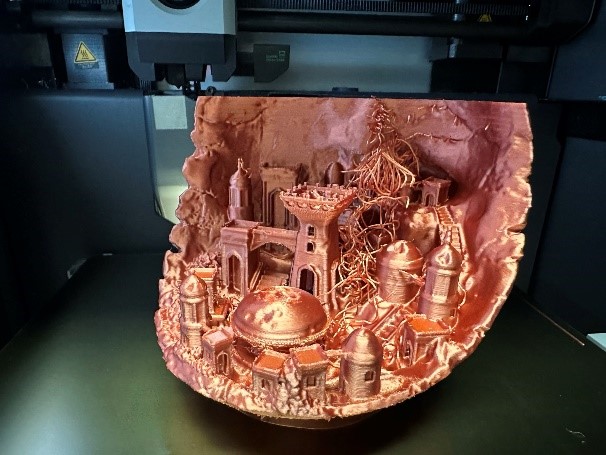
Closed Housing
The housing is not heated actively, but indirectly via the heating bed . There is also an exhaust air that is temperature- controlled. With ABS, for example, the exhaust air is deactivated and 50-60°C quickly occur in the housing. With PLA, the fan is switched on and you have 35°C. The fan is also provided with a filter.
Large touch display on the printer
Here a beautiful display was provided with a functionally comprehensive UI. All printer settings can be changed quickly, the model library can be viewed, the notification center can be opened and material management can be controlled (and more).
Filament Residue Disposal
Bambu Lab X1 Carbon 3D Printer Review / There is a separate “place” for the print head, where material that is purged when changing the filament or starting the print ends up in the waste bucket and then comes out at the back of the printer (printer point). There is also a stripping aid for the extruder at this point, so that filament residues do not get stuck in the print.
Software
Bambu Lab X1 Carbon 3D Printer Review – The range of functions of the software is top class. There is everything your heart desires here: a good UI, mobile app, remote monitoring, a very well forked slicer (AMS integration, device monitoring integrated) , automatic time-lapse recordings and downloads, integrated message center (for errors, hints, etc .) and much, much more.
One could say that this is where the greatest potential for development lies. BUT: It’s about optimizations or new features, not about critical bugs that need to be fixed.
It’s best to have a look at the changelogs, the repo on Github or the feedback page in Discord , there you can see the speed and scope of development here.
In my experience, the printer is already free of critical teething problems and has already received two updates with new functions and minor bug fixes in the last few weeks.
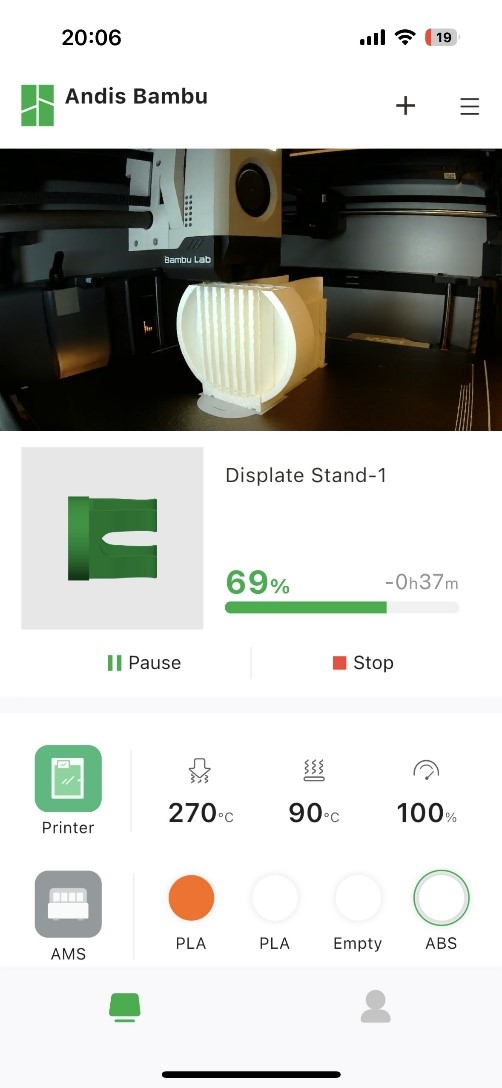
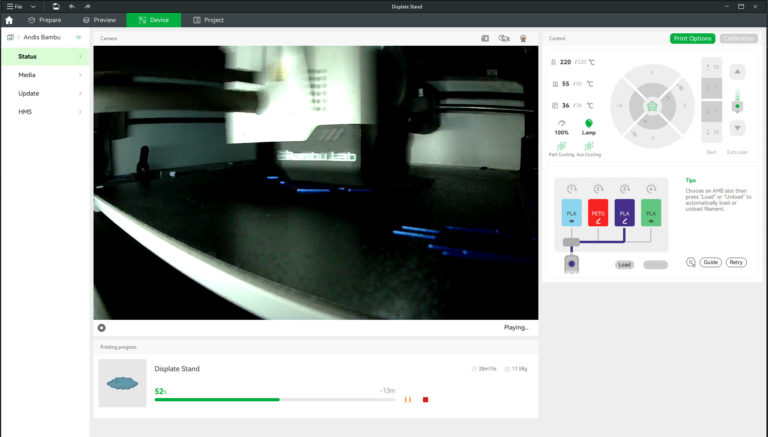
Spare Parts/filament/etc
There is an online shop in the EU and I have already ordered various filaments and a print bed. It all came within a few days, has fair prices and free shipping from €45.
I can’t say much about spare parts, just have a look in the shop. You can actually buy every part of the printer, I think the prices are very fair and when I look at the instructions in the wiki, the design is also designed for maintenance.
Manual/wiki
Bambu Lab X1 Carbon 3D Printer Review – The wiki is extensive with great articles. Just have a look, there is also a lot already for the maintenance work and how to disassemble parts.
Also worth emphasizing: There is a notification center in the app and on the display. If an error is detected, it will show up there with an error code. You can then scan the code with your phone and it will take you straight to the wiki article that helps fix the error (if there is one). I think that’s great.
Lots of little things
Many things have been thought through: swiveling display, removable cover (acrylic glass roof), decoupling of the filament feed, easy access to the belt tensioners and much more…
3D printing results
Bambu Lab X1 Carbon 3D Printer Review – Now what is probably the most important thing, the 3D printing results. I’ve been printing continuously with PLA, ABS, PETG and PC for a few days now. I mainly used standard settings and the part size included everything from very small (a few centimeters) to very large (complete area).
The short version: I have n’t had to cancel a single print, not a single print has come loose and apart from the one spaghetti problem I haven’t had any other errors that have occurred. And all I had to do to prepare for a print was press “Print” (Maybe add some glue to it depending on your buildplate). That was it.
Printing with a PC is particularly noteworthy. I’ve never been able to do that with other printers. High temperature and infinite warping have always been my enemy. In the meantime I have finished printing my filament shelf: 20cmx20cm component with PC in 5 hours without any problems.
Bambu Lab X1 Carbon 3D Printer Review – The printer’s speed ranges from damn fast (standard-mode) to crazy (ludicrous-mode). I printed a Benchy in 15 minutes and it looks amazing! Of course, speed always comes at the expense of quality, so I mostly print on Standard (ie just damn fast).
I print faster on parts that don’t need 100% finish. Good results can still be expected in the sport mode (124%), I rarely use the ludicrous mode (164%). Not because it wouldn’t be ok for mechanical parts, but because it’s so fast that I just don’t feel comfortable.
So to put it another way: The quality is 1A, I couldn’t wish for better, and at a significantly faster speed with significantly less personal effort and high reliability thanks to extensive monitoring.
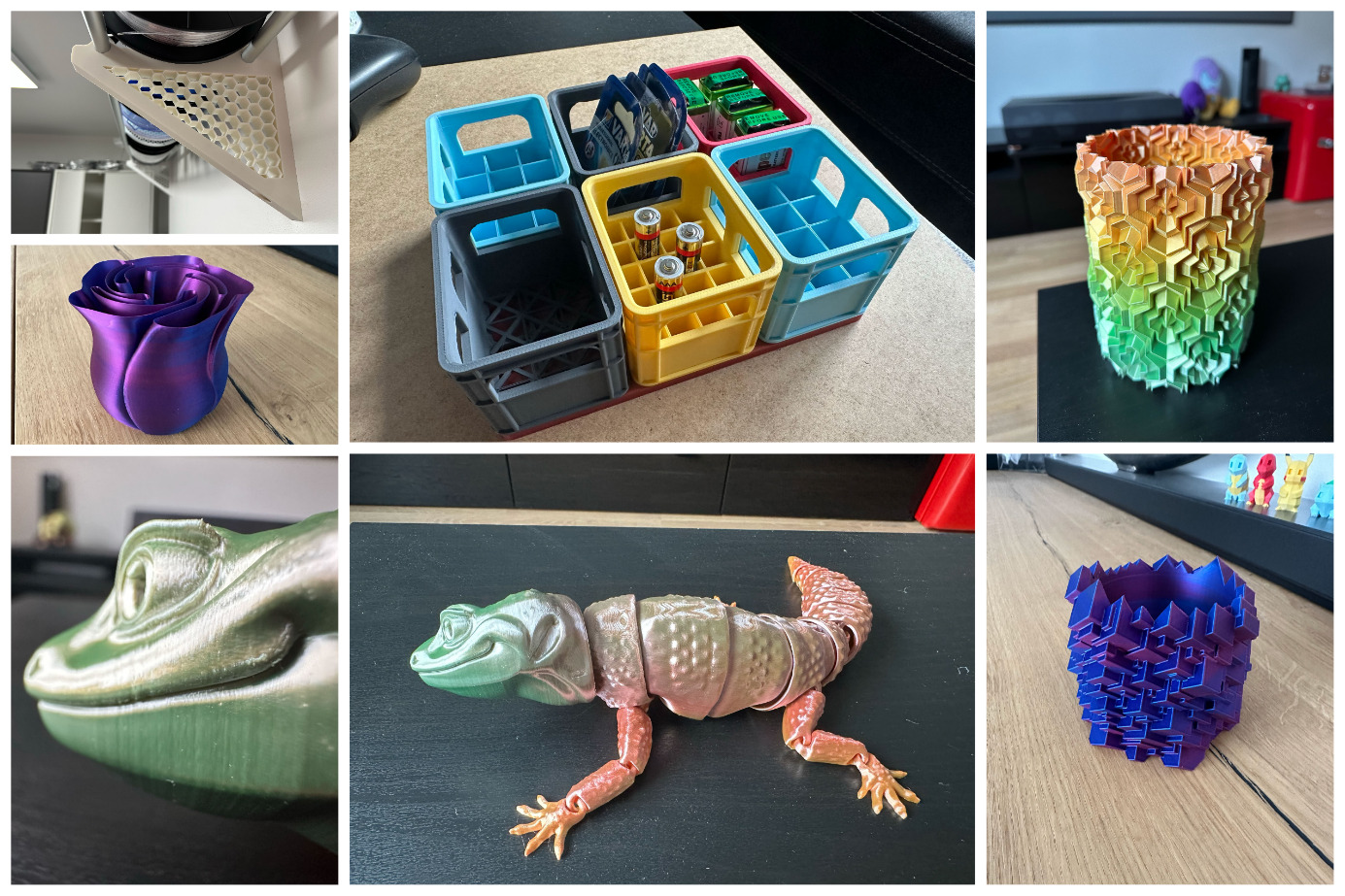
AMS (Automatic Material System)
This is an optional accessory and is included in the combo . The AMS stands on top of the printer and holds up to four rolls of filament that are automatically drawn in and changed. I didn’t know if I really needed that. Now I know that it’s a luxury, but one that I don’t want to give up. But first a few key data so that you know what that actually is:
- Bambu Lab X1 Carbon 3D Printer Review / Hermetically sealed container for up to four rolls of filament
- Each roll is rollable and there is a feeder (motor for material advance) at each place.
- Easily load a new spool of filament by inserting the spool and then inserting the end of the filament into the feeder. Complete. The system does the rest automatically.
- The AMS is connected to the printer and is controlled by it.
- additionally in the AMS:
- RFID for automatic detection of filament and automatic setting of settings (applies to Bambu Labs filament, but otherwise any 1KG standard filament fits into the AMS and can be used)
- automatic switching between individual filaments before or during printing
- various sensors such as moisture sensor or filament monitoring
The material change works very well , for example I have now loaded 1x ABS, 1x PC and 2x PLA and in the slicer I simply say which one I want to print with and that’s it. The correct filament is loaded automatically, no manual intervention is necessary.
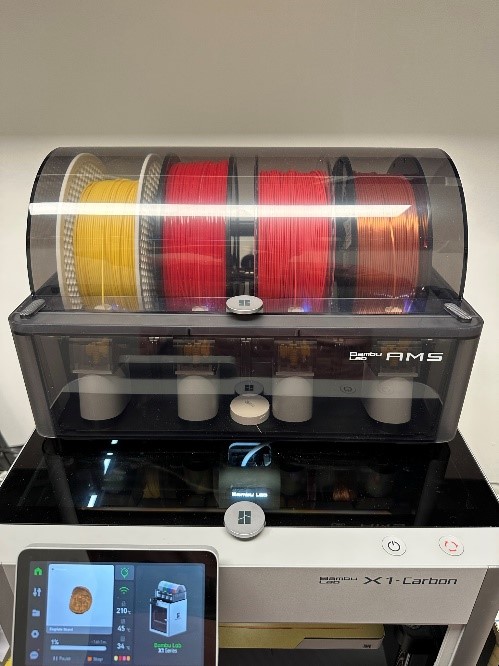
Multicolor prints with the AMS
The AMS can also be used to make multi-material prints. This can be, for example, multicolored prints . However, this is also useful for functional reasons, eg for the use of special support material for the separation layer between support and object material.
I’ve already made a few multi-colored prints, they look 1A , also because the material is changed quickly and cleanly. But that also comes at a “price”: Every time the material is changed, the old “remnant” is purged, i.e. disposed of. While this results in super clean multicolor prints, it also means longer print times and lots of waste material (both depending on how often a multicolor layer is in the model).
So it’s a trade off. There may be better systems dedicated to multi-color printing (the Mosaic Manufacturing palette, for example), but you often end up with a system that’s far more complicated and therefore more vulnerable.
As a conclusion I would draw: It is a good solution for multi-color printing in between or if you recycle your filament leftovers anyway (good address: https://recyclingfabrik.com/ ) .
It can be used very well for functional multi-material prints , for example as a separating layer between support and model . Otherwise, all the other advantages of the AMS in material handling remain.
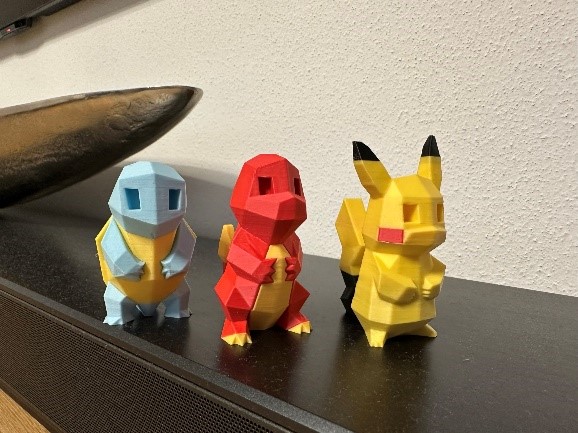
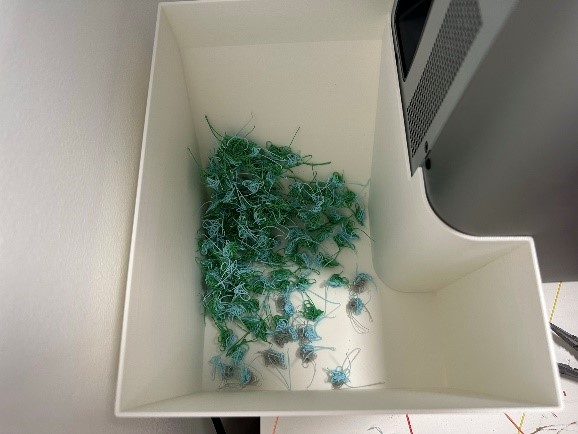
Conclusion
Bambu Lab X1 Carbon 3D printer: I am one person and therefore can only have one opinion. You don’t have to agree with me on all points and maybe I was too subjective on one or the other point. But what can I say: I’m only human and a victim of the teachings of psychology. If I really like something, it’s easy to find positive points (see “confirmation bias” ).
I’m aware of that, but still my conclusion: This is the printer that I’ve been hoping to own for years. I’ve come to the end of my search for a semi-professional printer and I’m more than satisfied.
Who would I recommend the printer to? Actually everyone who wants/can afford a printer in this price range. Here the decision is easy for me: If I’m looking for a very good, robust “I don’t have to mess around with this printer” that I can also use productively, then I can only say: Give in to the temptation. I haven’t seen a printer between $600 and $2500 that I would prefer to the X1.
Who would I not recommend the printer to? Everyone who has a smaller budget or who wants to (or has to) work directly at the printer as a newcomer to learn the basics. Needless to say, as a CG reader, there are fantastic printers in the $150-500 range.
And who has made it this far (to the readers of the whole report: respect! – to the “jumpers to the end”: caught!), thank you very much for reading and I didn’t really want to judge one-sidedly, but sorry: I’m a victim my circumstances. I’ve become a fan. Let’s see if that changes, but I doubt it. Post any questions or feedback in the comments. Bambu Lab X1 Carbon 3D printer review.
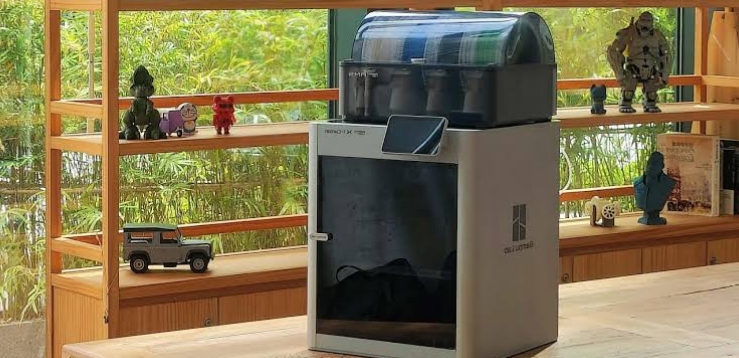
 Number One Boats from USA. Boat Marketplace Group Network. All Boats & Yachts for Sale, Reviews, Specs, Prices, Craigslists.
Number One Boats from USA. Boat Marketplace Group Network. All Boats & Yachts for Sale, Reviews, Specs, Prices, Craigslists. 